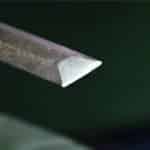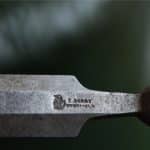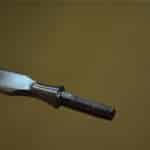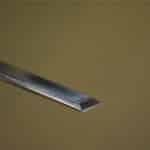Another Week Seems Filled and Developed
Finishing Your Projects Following Mine

Two Finishes – Simple and Effective
We are working on a series of finishing videos to help minimise failure and take out the possibility of risk and so show simple techniques that minimise risks associated with being a winner at the finish line. This week we concluded filming using two finishes and some techniques on finishing for our upcoming woodworking masterclasses online broadcast. When we made the workbench stools (that are the same as bar stools but ultra hand made and ultra comfortable too) series a few weeks ago we said that we would do this and the stools are ideal pieces for developing skills. Here are the results of this weeks videos. I am happy with the way they turned out and my hope is that finishing and trying techniques will be less intimidating for everyone. I ordered my milk paint from The Old Fashioned Milk paint Company, a long-standing company with masses of experience in this unique and wonderful finish. The second finish I chose is Danish oil. This transparent finish is quick and simple and really a good finish for things like chairs and stools. See for yourself how these two finishes came out.



I worked on this one 3/4” blade, flattened the flat side, refined the bevel and of course shaped the bevel with its refined convex bevel. I like the bevel’s size, not too thin at the edge of the bevel, nicely tapered and enough steel to give me confidence. We’ll show you progress as we go.






yes finishing is a troublesome matter for me .not so much as a fear factor as to what to use but how to use a certain product and to apply it correctly .like the first time i used shellac my approach and technique were all wrong .i can read about applying these products all day but till i actually see it been done is when i can visual learn the method .looking forward to this
I used get all worked up on what kind of finish to use. Now I try and keep it as simple as possible when choosing and using finishes. Shellac, lacquer in the can, fine furniture wax, Danish oil, and good ole boiled linseed oil. I do like general finishes, oil urethane for a more durable finish when I need it. I have recently been experimenting with trans tint dyes that can be mixed with water or alcohol. I don’t think I will ever use a pigmented stain again. Mixing tints to just the right color you want for a project is great and is so much more fun than standing in the store wishing the stain was just a little redder or less orange etc.. The dyes don’t cover the grain of the wood either, they let the natural beauty come through, plus they actually penetrate deeper.
I have a Campbell Hausfeld cheapo sprayer that came with it’s own little compressor, cost about $120 a few years ago. I use it when I finish large projects like cabinets. I will spray a couple coats of thinned sanding sealer on, prep the cabinet for the final coating and spray 3 coats of water based acrylic finish. It doesn’t yellow like a poly urethane will and I can lay down more coats quicker and get a better end product because the water based product dries quicker.
Paul, you mentioned milk paint, which I like the look of, and The Old Fashioned Milk Paint Company – are there stockists I can buy from in the UK or do I need to order from the United States (or even find an alternative)?
You can get it from Essex here http://www.blueberrystoreonline.co.uk/old-fashioned-milk-paint-6oz-or-12oz-bags-382-p.asp It is more expensive than buying in the US directly but it goes a long way because you add the water.
You can get the paint in the UK but it is a little more expensive. A little goes a long way and we just finished a video for the stool which we will try to get up asap. Here is the link.
Thanks Paul, sorry for the delay in replying and acknowledging. I ordered paint for my completed bookcase. It came promptly and the ordering process was easy. At a ratio of one part powder to one part water the first coat covered well but it felt like I had to work it hard. Not like regular emulsions or wood paints. Perhaps I should have thinned it a little further? Anyway, I have a second coat to apply and I think I can make it a little thinner for easier application. I’m learning. The brush and container were really easy to clean, much easier than even normal emulsion.
I am glad you went the whole hog and used the milk paint, Nick. My favourite part with it is the sanding and sanding through. It’s a bit messy but the end result is usually quite stunning. Look forward to coming up to see you and Nancy and the kids one of these days.
I think the fear of finishing derives from the sense that everything is on the line and that you must get it right on the first try, or else toss the project. This fear can be greatly reduced by seeing and learning methods to adjust finishes, methods that let you tune and correct the color and finish just as you tune and correct a joint or surface. This is especially so when working with color rather than just clear or translucent finishes.
Some of the hesitancy comes from lack of knowledge of what the finish is supposed to accomplish. Does a given type of finish, such as Danish oil, shellac, and wax, bring out the natural beauty of the wood more than protection? or is it vice-versa? Both? Is it to hide defects as well?
Does the choice depend on the wood species? Can I classify them into two main types porous, ( stain), or non-porous (varnish)? Is a finish even necessary?
What is a good, general, finish that a new woodworker cannot go wrong with, will simplify things and that will serve to aesthetically enhance a piece as well as protect it for years to come? Please don’t ignore the basics when you do an upcoming finishing segment. I think it will help a lot ofus.
There is a great deal of confusion surrounding finishes and most of this is complication by manufacturers making statements and claims that are erroneous and using descriptive terms that are misleading.
There is no finish that hides a defect and often people think that the finish will do that. In every case the finish will more highlight the defect and so you must perfect the work as much as possible. Most finishes will reveal less obvious flaws created that may not be at all obvious before the finish goes on. the use of orbital sanders works well for most work, but on softer woods, for instance, the softer areas either side of harder aspects of the growth rings may feel smooth, but often the cause undulation that looks ugly. Oils do tend to deepen the richness of wood. Often people use oil as an initial coat and finish off with varnishes, lacquers, shellac and so on. I tend to avoid wood stains most but not all of the time, but I use other means to create effects. For colour I tend to use dyes of different types. I try not to get too hung up go tinctures and mixing colours but when I used to do restoration and conservation work that was what we relied on most for getting a perfect match.
Re shellac. Shellac is a finish that needs confidence and practice, but when you get the fact that you cannot play around too long with it it will become a favourite. Danish oils are very simple to use but the surface is not always the most pleasing because it does depend on the manufacturer and the levels of other additives they have used. Sometimes Danish oil feels wonderful and has very pleasing depth. My absolute favourite is Deft Danish Oil, but you cannot buy it here in the UK. It is a wonderful oil available in the US.
Thank you mightily for your reply, for taking the time to respond with thorough and clear information based on your perspective as a working craftsman and teacher. We amateur woodworkers have grown to appreciate and value it more each day.
Finishing has not been one of my favorite things to do either, mainly because I hate sanding and get a little confused on what and how to use a product. But since I have been using hand tools I find I don’t have to sand as much and am really liking shellac. I haven’t tried Milk Paint but have a couple projects coming up I want to try it.
Steve
PS: were there suppose to be pictures showing here ???? All I am seeing is a blue box with a ?.
We have been having problems and our web-host will hopefully get ti it on Monday.
Hi Paul, I really like the look of the milk paint as well. I was wondering what color or mix of colors you used on the stool? Thanks for everything you and your group are doing for all of us!
Brad
The colours I used for the workbench stool are Lamp Black for the top coats and Barn Red for the Base coats. Two coats of each works well but you can put thinner coats if you want to. I like the the thickness I get from equal parts water to powder and that’s what The Original Milk Paint Company recommends.